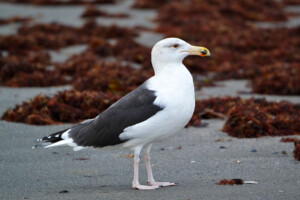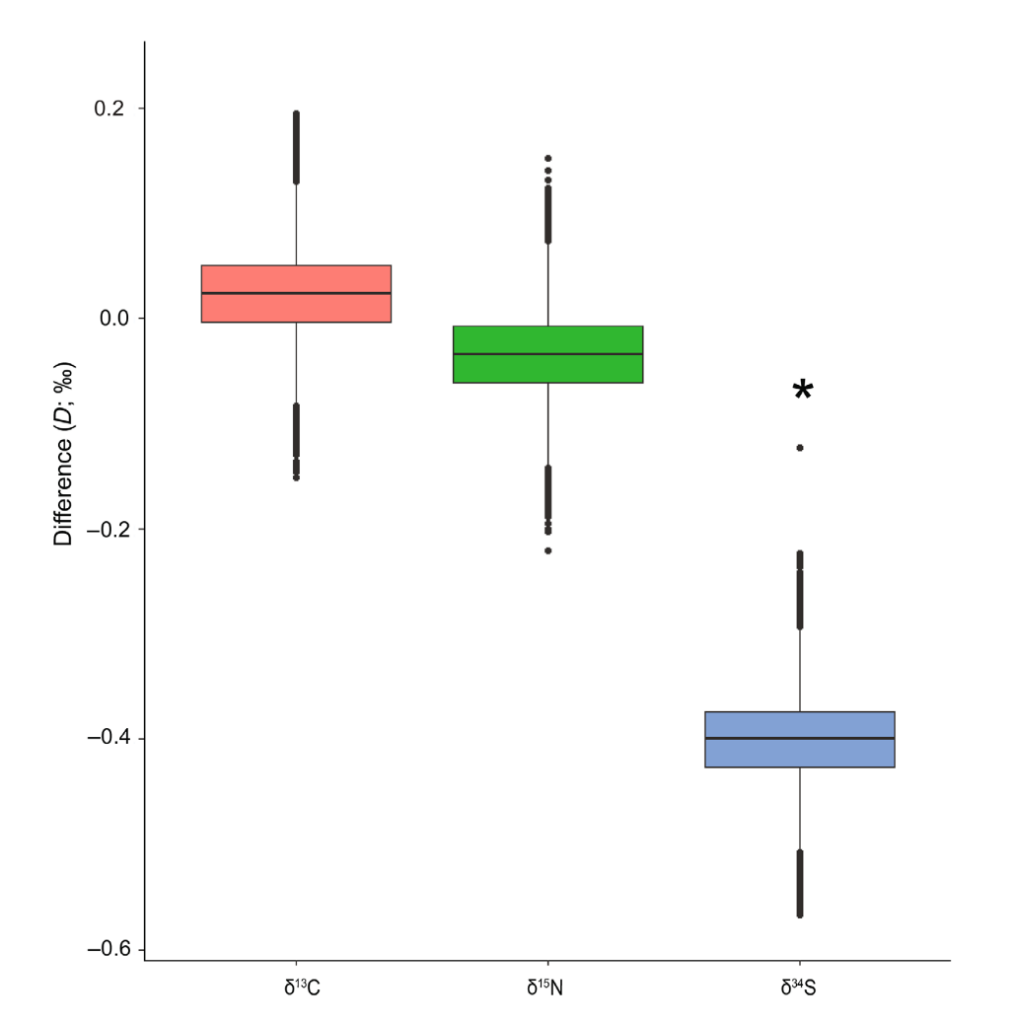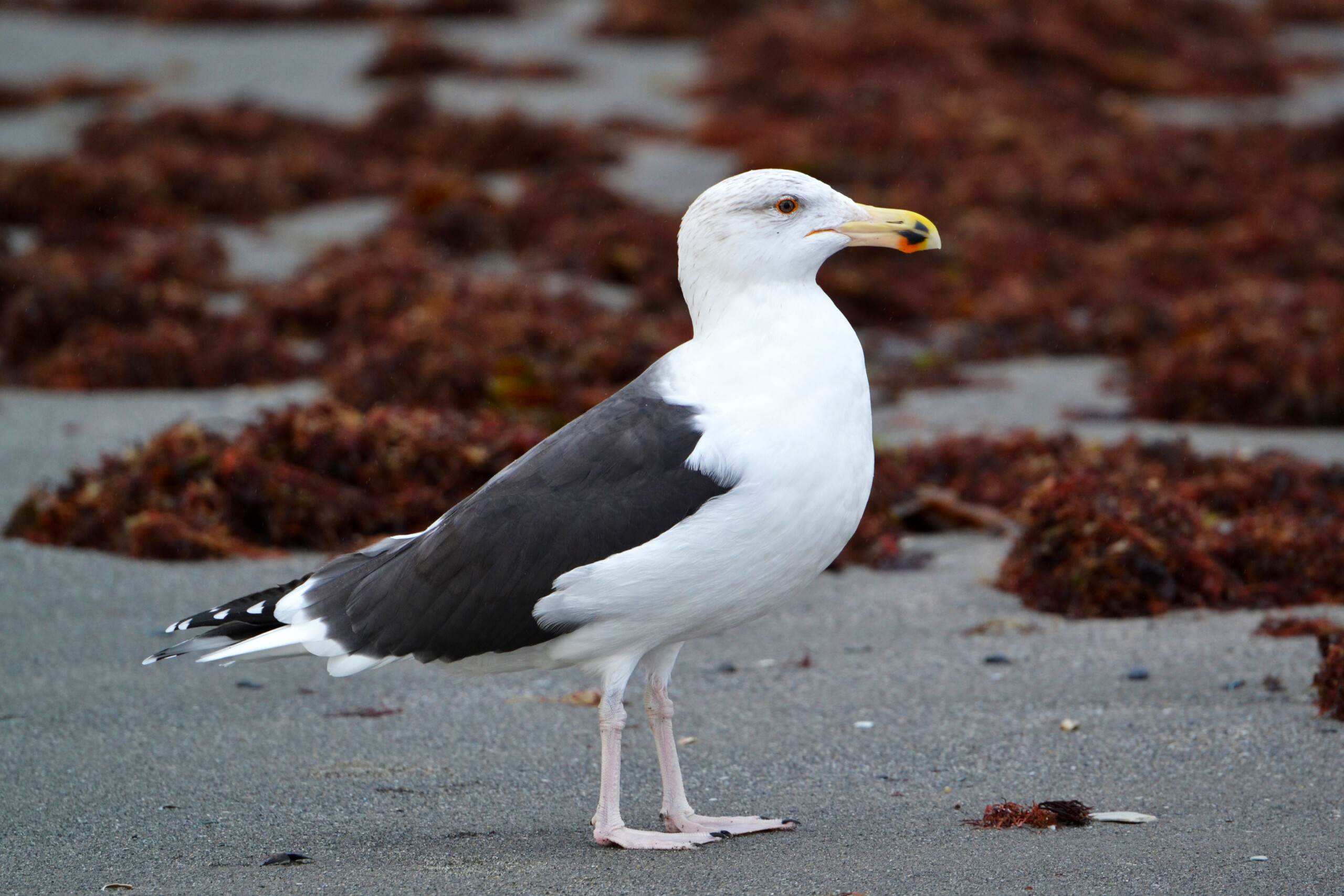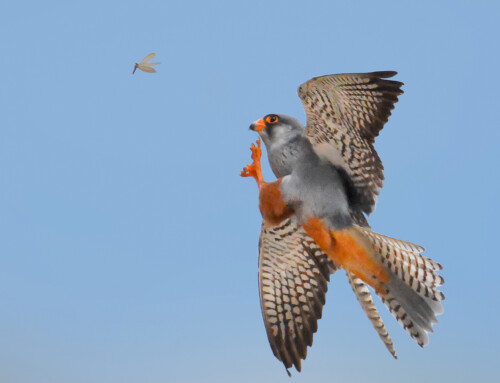
LINKED PAPER
Effects of sodium heparin on δ13C, δ15N and δ34S values in avian whole blood. Lato, K. A., Thorne, L. H. 2023. IBIS. DOI: 10.1111/ibi.13195. VIEW
Stable isotopic analysis has been an important part of ecological studies for many decades, and has been used to assess bird movement, trophic ecology, and trophic dynamics using different avian tissues including feathers and blood. However, one issue with using blood samples is coagulation, which can be a particular problem when field sites are isolated and can prevent the extraction of blood plasma. Adding anticoagulants to blood samples can enable them to be used later, but the impacts on stable isotopes in avian species is not well known.
In a recent study in Ibis, Kimberly Lato and Lesley Thorne used a Bayesian approach to assess the effects of sodium heparin, a commonly used anticoagulant, on δ13C, δ15N and δ34S values in avian whole blood of Herring Gulls (Larus argentatus) and Great Black-backed Gulls (Larus marinus).
Stable isotopic analysis
Three of the main elements used in isotope ecology are carbon, nitrogen, and sulphur. Ratios of stable carbon isotopes (δ13C) can be used to identify general foraging habitats (DeNiro & Epstein 1978), ratios of stable nitrogen isotopes (δ15N) can be used to infer trophic position (DeNiro & Epstein 1978, 1981), and ratios of stable sulphur isotopes (δ34S) can be used to help distinguish between foraging types (Whitney et al. 2018). Due to the different metabolic turnover rates of different isotopes in different tissue types, the stable isotopes of avian whole blood can reflect diets of individual birds over multiple weeks (Hobson & Clark 1992).

Figure 1. Posterior output from a Bayesian analysis of the mean differences (D) between treatment and control groups for δ13C, δ15N and δ34S in Herring Gull and Great Black-backed Gull blood samples. Treatment groups included sodium heparin while control groups did not. Differences were considered significant if the 95% credible intervals did not contain zero. Significant differences are marked with an asterisk (*).
The impact of adding anticoagulant
Comparing control blood samples to samples treated with sodium heparin showed that while adding the anticoagulant did not influence δ13C and δ15N values, δ34S values were significantly affected. However, when the values were incorporated into stable isotope mixing models (SIMMs), which are commonly used to make quantitative inferences of avian diet, the sodium heparin-treated samples only slightly impacted the output of fine-scale models of diet, and did not meaningfully impact the estimated diet proportions of broad-scale models.
Relative to sodium heparin, the blood samples in the study had much higher frequencies of occurrence of carbon and nitrogen and a lower concentration of sulphur, which could have led to the differences in effect significance. The researchers suggest that future studies quantify the δ13C, δ15N and δ34S values of sodium heparin to better understand those values relative to blood samples.
The findings of this study differ from others in the literature, indicating that isotopic factors can vary across taxa. Future studies should therefore take care when applying findings to different taxa as well as taking scale into consideration, and, where possible could perform their own analysis of the effects of different anticoagulants, in different species, and across different blood components, e.g. plasma vs. red blood cells (Lemons et al. 2012).
References
DeNiro, M.J. & Epstein, S. (1978). Influence of diet on the distribution of carbon isotopes in animals. Geochimica et Cosmochimica Acta 42: 495–506. VIEW
DeNiro, M.J. & Epstein, S. (1981). Influence of diet on the distribution of nitrogen isotopes in animals. Geochimica et Cosmochimica Acta 45: 341–351. VIEW
Hobson, K.A. & Clark, R.G. (1992). Assessing avian diets using stable isotopes I: turnover of 13C in tissues. Condor 94: 181–188. VIEW
Lemons, G., Eguchi, T., Lyon, B. & LeRoux, R. (2012). Effects of blood anticoagulants on stable isotope values of sea turtle blood tissue. Aquatic Biology 14: 201–206. VIEW
Whitney, E.J., Beaudreau, A.H. & Howe, E.R. (2018). Using stable isotopes to assess the contribution of terrestrial and riverine organic matter to diets of nearshore marine consumers in a glacially influenced estuary. Estuaries Coasts 41: 193–205. VIEW
Image credits
Top right: Great Black-backed Gull (Larus marinus) | Andrew C | CC BY 2.0 Wikimedia Commons
Blog posts express the views of the individual author(s) and not those of the BOU.
If you want to write about your research in #theBOUblog, then please see here




